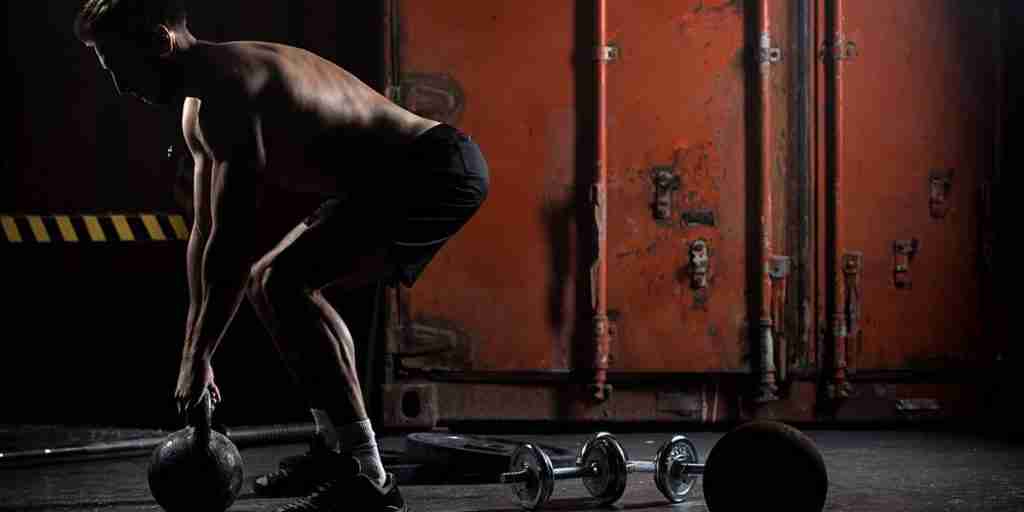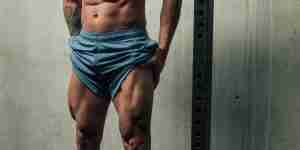TLDR: This article is a guide to posterior chain training and explains the importance of training the posterior chain, which is often neglected in leg workouts.. The posterior chain is a group of muscles located on the back of the body that work together to perform various movements.
Highlights: A balanced posterior chain can improve posture, reduce the risk of injuries, and increase athletic performance.
Highlights: The posterior chain muscles include the erector spinae, glutes, hamstrings, and calves.
Table of Contents
Intro – Posterior Chain Training
When it comes to training your legs we all think of squats, leg press, maybe lunges if you’re a sicko, but leg curls or hip thrusts are rarely top of mind. Those muscles that run down the back of your lower body – that’s the posterior chain and in this guide we are going to identify what it is, why you probably aren’t training it well right now, why it matters and what you can do about it.
When you sprint or step back, your body uses the hamstrings more than it’s using the quadriceps. When a boxer steps back to avoid a punch then slips back into the pocket to throw a counter jab, the glutes and hamstrings are getting called upon at a primary level.
So much of what we do in sporting and active environments require us to activate muscles that for most people’s leg workouts, are treated like second class citizens. If we don’t give them their proper attention, it can lead to muscular imbalance and injuries and so the purpose of this posterior chain workout guide is to arm you with the information to not just avoid potential future injuries, but explore a whole new avenue of untapped muscle growth.
“The best way to protect your hamstrings is to keep all of your leg muscles healthy and working together, including the glutes and the quadriceps (the muscle group at the front of each thigh).”
Source: Health at Harvard
What is the Posterior Chain?
The posterior chain is a group of muscles located on the back of your body that work together to perform various movements. This muscle group includes the erector spinae, glutes, hamstrings, and calves. When trained properly, a strong and balanced posterior chain can greatly benefit your workouts, bodybuilding, and sporting performance.
What Muscles Make Up The Posterior Chain?
The erector spinae muscles run along your spine and are responsible for keeping your back in an upright position. These muscles are important for maintaining good posture and preventing lower back pain.
The glutes, or buttock muscles, are the largest and most powerful muscles in the body. They play a major role in hip extension, which is important for movements like squats, deadlifts, and running. (Source: Library of Congress)
The hamstrings are located on the back of the thigh and are responsible for knee flexion and hip extension. Strong hamstrings are important for athletic performance, as they help with running, jumping, and other explosive movements.
The calves are located on the back of the lower leg and are responsible for ankle plantar flexion, which is important for movements like walking, running, and jumping.
Why a Balanced Posterior Chain is Important
Getting the lower body balance right and ensuring you have a balanced posterior chain is important for your overall fitness and athletic performance. Just as the quote from Harvard’s own report states, when the muscles in the posterior chain group are strong and working together, they can help you generate more power and speed, as well as reduce your risk of injury. Which brings us on nicely to the benefits of posterior chain workouts.
What are the benefits of Posterior Chain Workouts
As someone who spent many years boxing, I am acutely aware of the aches and pains in your body from imbalance. Look at a boxers shoulders face on – all those years standing in front of bags, mirrors and people favouring one side, leads to a messed up posture. It’s actually known as boxer’s shoulder!
The other issue I’d often get is tightness in my IT band. If you’ve ever felt that throbbing ache down the side of your thigh, you’ll know what I mean. Boxers experience this a lot, due to an overuse of one side of the body. It hurts and it’s only relieved for me by sleeping with a shed load of pillows under my legs or physio driving their fingers into my legs.
Anyway, I say all this as I know about imbalance and when it comes to leg training including my own in the past, it would neglect Glutes by only stimulating them with a secondary movement – squats/leg press and hamstrings would get little more than a leg curl, and some secondary stimulation from a conventional deadlift. Not much love for the posterior chain. Does this seem familiar?
If so, here are some immediate ideas to consider as to the benefits of enhancing your posterior chain workouts.
- Improved Posture
We all know looking good is all about lighting, tans, vertical stripes and posture, so posterior chain workouts will really get to work here. The erector spinae is a major part of this, it keeps you upright, and keeps your lower back healthy, this is the triangular looking muscle that sits at the base of your spine and spreads down to the top of the glutes.
- Reduced Risk Of Injuries
While your quads will always be stronger than hamstrings, and that’s okay, (0.8-1 ratio), letting the strength ratio slip too far out of whack, and not focusing enough on your glutes, can lead to your body struggling to deal with it all. Essentially, a balanced posterior chain can help improve your biomechanics and that’s going to reduce stress on your joints. For example, having strong glutes and hamstrings can help protect your knees from injury during movements like squats and lunges.
- Increased Athletic Performance
A strong posterior chain can also help improve your athletic performance. For example, having strong glutes and hamstrings can help you run faster, jump higher, and perform explosive movements with more power. Strong erector spinae muscles can also help you maintain good form during heavy lifts like deadlifts, which can improve your overall strength.
Posterior Chain Muscles & Primary Exercises
Before we dive into my own favourite Posterior chain workout I’ll mark out the muscles themselves and primary movements to work those muscles.
This means an exercise which uses the posterior muscle listed as its agonist or prime mover. Therefore whether you’re away from your gym travelling and forced to change things up at a hotel gym, or just want to refresh a current leg session, you can find a way to make up a posterior chain workout regardless.
Erector Spinae
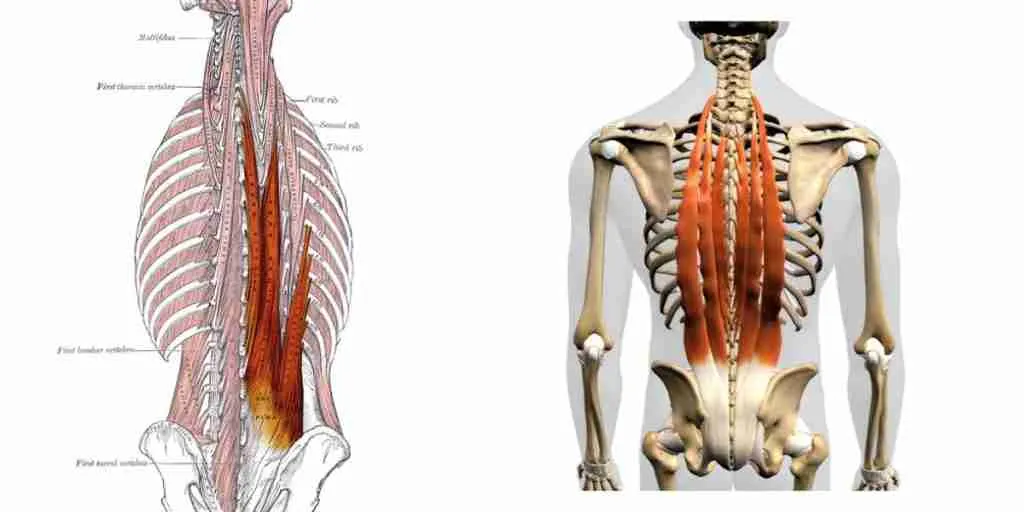
Made up of three muscles, the Longissimus capitis, the Longissimus cervicis and Longissimus thoracis, these are the most powerful spinal muscles and are targeted with the following exercises as prime movers:
- Back Extensions
- Good Mornings
- Superman
While the muscles run all the way from the pelvis to the skull, we tend to think of the base lumber area and the erector spinae, and you can hit these directly with barbell good mornings, or knocking our back extensions. You might have done those on a resistance machine before, used a Roman Chair or simply done it on the floor.

Reg Park, Arnie’s idol, would start all of his heavy lifting workouts with sets of back extensions for high reps, he believed that it would help him lift more when deadlifting and in turn would have a knock on benefit in getting stronger and gaining mass. In addition, issues with these muscles can create problems in your legs, but they can also impact your posture. If you train abs but not the other side of your body, you’re bound to create issues for yourself down the line. So consider them important for a solid core and bulletproof legs.
A Journal of Sport report showed introducing back extension work into a routine, improved spinal range of motion, back strength and endurance. So if you’re going to be loading weight on your shoulders to hit squats, it’s clear why adding a prime erector spinae movement into a training plan is worth taking seriously.
Hamstrings
The Biceps Femoris, these help in sprinting or explosive bursts of power. They are generally only worked in a secondary way during squats and leg press, so it’s vital to give them a little bit of prime mover attention.
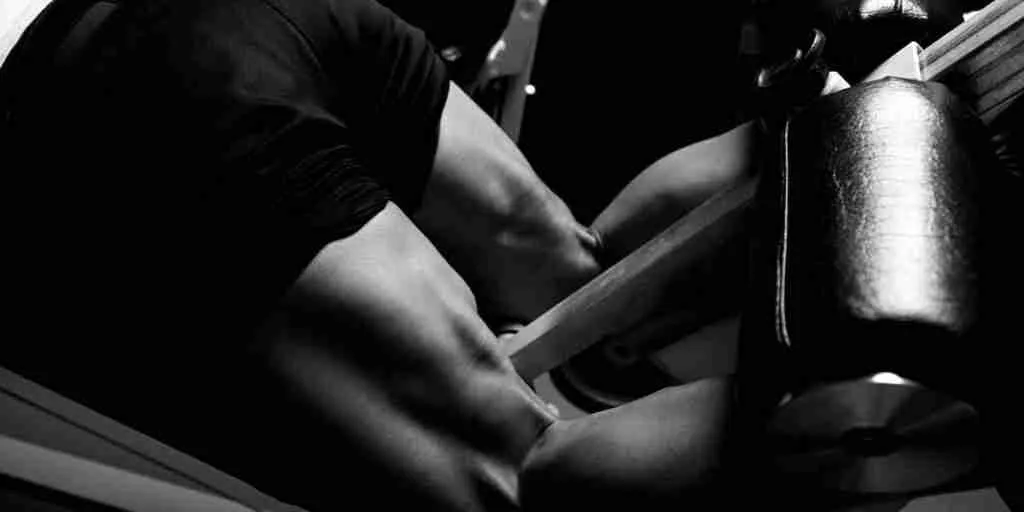
- Reverse Lunges – Stepping backwards
- Leg Curls – Seated – Standing – Laying (For me, in that order)
- Stiff Leg Deadlift
- Single Leg Dumbbell Deadlift
Secondary: RDLs – High Foot Placement Leg Press – Kettlebell Swings/Cable Pull Throughs
Glutes
Everyone likes a firm behind and so does your body. Weak glutes can lead to injuries in other parts of the lower body, even back and if you want to increase the calorie burning potential of your physique, why not train the largest muscle in the body more often. Squats, traditional deadlift and leg press, certainly stimulate the glutes but they don’t match up to a dedicated movement like a hip thrust.
- Barbell (Weighted) Hip Thrust
- Glute Drive – Plate loaded resistance alternative to barbell hip thrust
- Isometric Hip Bridge – Static contraction for time as opposed to reps
- Glute Kickback – Cable column kickbacks or dedicated machines
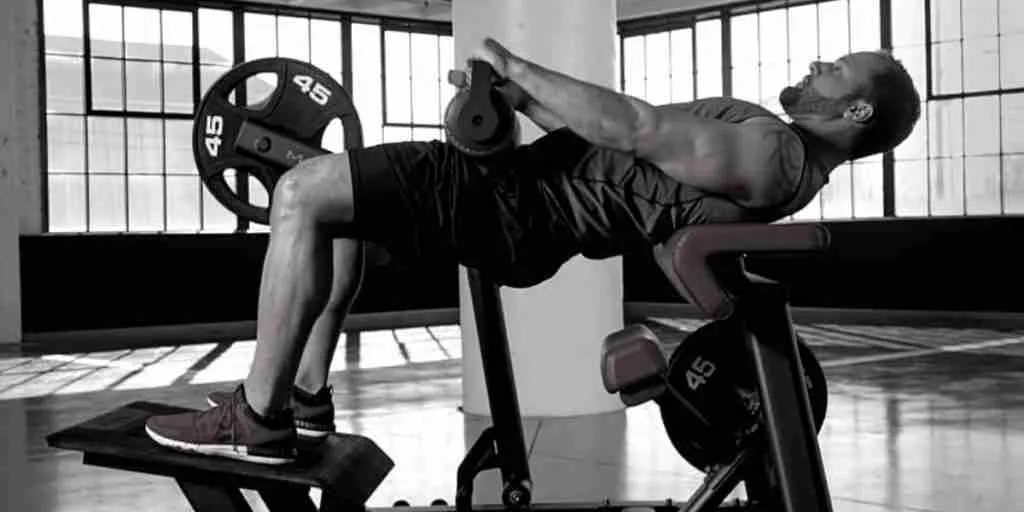
Source: Matrix Glute Trainer
Secondary: Sumo Deadlift – Sumo Squats – Bulgarian Split Squat – Kettlebell Swings/Cable Pull Throughs
Calves
This muscle group needs little introduction. Made up of the Gastrocnemius and Soleus, it can be a hard muscle to train for hypertrophy (size) and tends to respond better to higher rep ranges., due to being predominantly slow twitch Type 1 muscle fibres:
Source: https://pubmed.ncbi.nlm.nih.gov/123895/
- Calf Raise
Best Posterior Chain Workouts
In this section I am going to break down my own posterior chain workouts for mass and with lighter weights for general needs. This workout forms part of my own favoured 5 Day PPL Split and along with this linked quad workout for mass, has helped me experience significant lower body hypertrophy in during a 6-9 month period.
For Mass
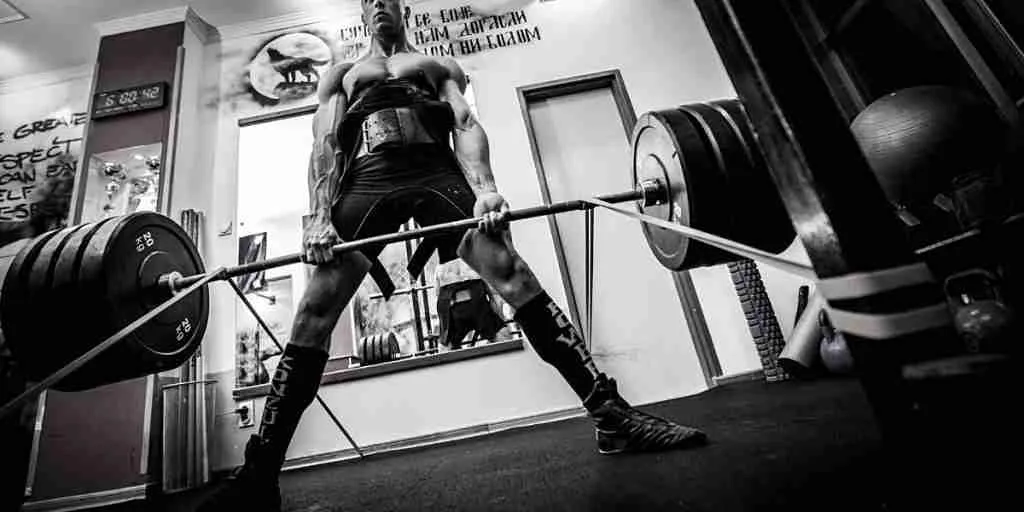
If you’re trying to grow your legs and only training the front (anterior) you’re missing out a whole lot of potential muscle volume.
When it comes to building mass, I like to play to the strengths of the muscle groups. If the muscle group is predominantly fast twitch and responds better to heavy rep ranges or explosive movements, then that is what will form the base layer of my workouts.
Guess what?
Other than the calf muscles and erectors, the posterior chain is fast twitch dominant. This means we are going to train heavy. So get your weight belt out of your suitcase or training bag, slip on the wrist straps and lets get ready to take the strain.
- Leg Curl: 1 x Burn up* (*Start on the bottom weight, perform 6 reps and then increase the weight by one level. Continue to failure
- Sumo Deadlift: 5 x 5 – Set 1 @ 65% 5RM – Set 2 @ 85% 5RM – Sets 3-5 @100% 5RM (If weight is limited swap with Smith RDL)
- Glute Drive:
Here if the gym has a dedicated glute drive machine great – or I will do the leg extension machine hack if no one is around to look (video below)
Set 1: Burn up*
Set 2 – Set 3: 8-10 reps
Set 4: 25 reps @ 100% 12RM – This requires pauses for 3-10 seconds each time you fail.
No glute drive? Watch below
- Reverse Lunges: (Barbell or Dumbbells – weight permitting) 3 x 8
- Glute Kickback (Use a cable column handle for a foot stirrup if no velcro strap available):
Set 1-3 x 12 reps
Set 4 x 25 reps @ 12RM - Superset: Calf Raise / Glute-Ham Raise (Roman chair) or Back Extension – 3 x 15-25 reps each
- Leg Curls: 12 – 12 – 25
This posterior chain workout, starts with the a leg curl and ends with it, but ensures that all of these exercises have the potential to be performed in most hotel gyms where they often simply have a cable column, dumbbells, leg extension/leg curl machines and potentially barbells. The workout has a base of heavier moves at the beginning, before moving into the ‘pump’ style exercises towards the end.
The goal here is to ensure across that there is focus throughout the entire posterior chain with the heavy lifting visited earlier when the body has higher glycogen stores to enable it achieve maximal effort.
The workout will take close to the 1 hour mark mostly due to the loading and unloading of a deadlift bar, and purposely features some elements that stimulate quads also, to ensure that it complements an anterior workout on the same week. This means all leg muscles are trained under load to varying degrees twice a week.
With Lighter Weights
There are a few reasons why you may want a posterior chain workout with lighter weights. One might be circumstances, eg: how do you get the workout you want with limited access to weight-training equipment? Perhaps you are recovering from injury; or 3, maybe you want to be moving a bit more and burning a lot more calories mid session.
Whatever your reasons, this is the posterior chain workout plan I take if I need to use (or have to) lighter weights.
This workout includes Kettlebells, dumbbells, bands/trx, a rowing machine and generally available resistance machines.
I’ll explain the rowing machine shortly.
- Single Leg RDL: 10 x 10 Each Side @60% 1RM. Rest 30 seconds between sets (Can swap with dumbbell stiff leg deadlift if weight is available)
I opted here for single leg as it’s harder at lower weights as it require stabilising forces. If the dumbbells are heavy enough, then a dumbbell stiff leg deadlift can work fine and cut some time out of the workout. - Dumbbell Reverse Lunge Rack Run: 25 – 15 – 10 – 3 Minute Rest – 10 – 15 – 25 (10 seconds between sets, except rest period)
You will hate me for this. The Leg wobbler. - Rowing Machine Leg Curls – 100 Reps (Watch How-To) (Or 4 x 25 Leg Curls)
Keep going until you hit 100 reps, breaking as you need to.
Again, I’ve thrown in an option when there might not be a leg curl machine but perhaps there is a TRX or rowing machine which can be adapted. The 100 rep rest pause is because the loads will be lighter and reps will need to be performed at a higher volume with less rest. - TRX Hip Thrust: 100 Reps (Or use modified leg extension machine 4 x 25)
If no TRX – resting your feet on a higher surface - Superset: 3 x Kettlebell Swings 15-20 Reps / Plie Sumo Deadlifts x Fail
- Calves: TRX Calf Raises (Or on a step) x 100 reps (rest-pause)
This 600 rep posterior chain workout will have you breathing out your…..well, posterior. It is suited for those looking to raise their heart rate and aiming to build muscular endurance. It’s tough but great when access to training gear is limited.
Outro // The Wrap Up
There you have it, my go-to posterior chain workout plans for mass or for burning calories and cutting. These posterior focused training plans can help you add that needed balance to your lower body, avoid injuries and develop more athletic power. Not to mention guys, it’s not just women that need to train their glutes. It’s the biggest muscle in the body, grow that and you’re improving your metabolism while at rest.
No brainer.

